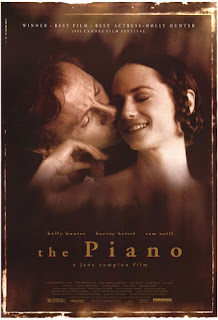March 7th: TROUBLE IN PARADISE (Ernst Lubitsch, 1932)
Two thieves and impostors fall in love and join forces to rob a Parisian perfume entrepreneur.
Director Ernst Lubitsch was born in Berlin, and during the silent days of cinema became known for both comedies and dramas, with some of his films distributed throughout Europe as well as the United States. He came to Hollywood at the request of star and United Artists co-founder Mary Pickford, and wound up with a contracts at various studios that allowed him a considerable amount of artistic freedom. After the onset of talking sound films, he had a successful run of musical comedies, usually starring French actor Maurice Chevalier and/or Jeannette MacDonald.
Lubitsch teamed up once again with screenwriter Samson Raphaelson (whose play The Jazz Singer based on the life of Al Jolson was adapted as the first talking picture), turning to a recent Hungarian play The Honest Finder for loose inspiration. The film's male protagonist was based on real-life 19th century con man George Manolescu. The two would often talk and act out scenes together to perfect the timing and dialogue, though Lubitsch did not take any screen credit for the script.
The cast is headed by Miriam Hopkins, who had just begun making films in 1930, her big break coming in a featured role in Dr. Jekyll and Mr. Hyde the following year, as well as her first film with Lubitsch on The Smiling Lieutenant. Joining her are Kay Francis, already a Broadway veteran whose Hollywood career was taking off and would soon become Warner Bros' #1 actress. The third member of the trio is British actor Herbert Marshall, another stage actor who acted opposite many of Hollywood's biggest names, starring with Marlene Dietrich the same year in Blonde Venus. Notable character actors in the cast include Edward Everett Horton, Charlie Ruggles, and C. Aubrey Smith.
The film was shot on the Paramount soundstages (subbing for the story's settings in Venice and Paris), with the memorable art deco production design by the head of the studio's art department, Hans Drier (Sunset Blvd). The gowns for the actresses were designed by Hollywood style innovator Travis Banton.
Made before the Production Code was introduced to censor content in 1935, the film is filled with innuendo that would soon be prohibited in Hollywood films, allowing for a more realistic treatment of romance and sex. While the story's atmosphere is set in high society, Lubitsch and Raphaelson do not ignore the economic Depression of the time and contrast their protagonists' more humble origins with the world they've infiltrated. Unlike many early "talkies", Lubitsch's film has a gracefulness and visual inventiveness that many directors were unable to manage with the focus on dialogue.
Trouble In Paradise was a critical and box office success, and would be named one of the year's ten best by the New York Times and National Board of Review. It typified what would be known in the industry as "The Lubitsch Touch", and would inspire filmmakers from Billy Wilder all the way to Wes Anderson. Lubtisch was named production manager of Paramount in 1935, a rare distinction for a director.
Running time is 83 minutes.










Comments
Post a Comment